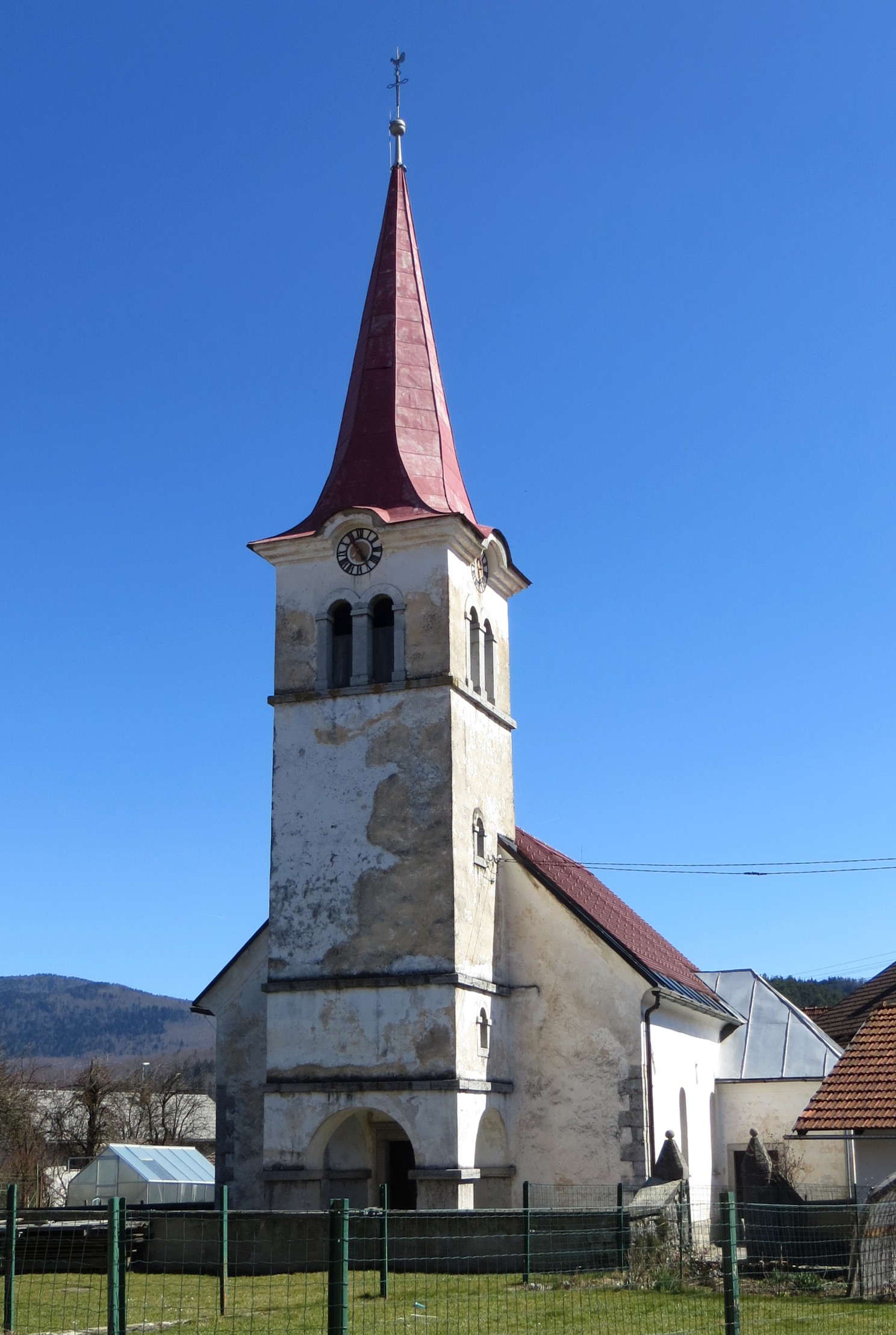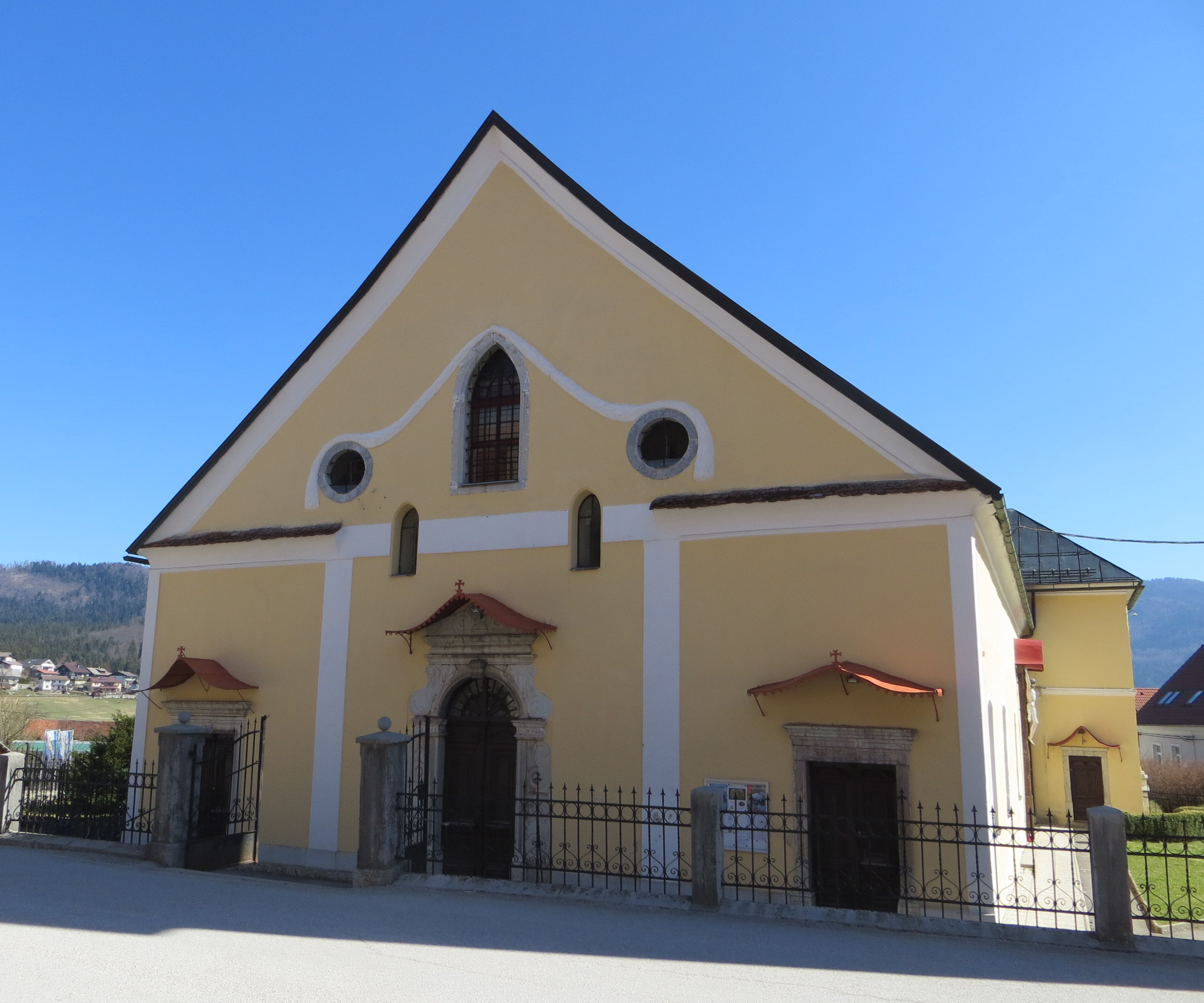|
Kozarišče
Kozarišče (, in older sources ''Kozaršče'', german: Kosarsche, it, Cosarsca) is a village south of Stari Trg pri Ložu in the Municipality of Loška Dolina in the Inner Carniola region of Slovenia. The area of the village extends south of the main settlement right to the Snežnik Plateau and to the border with Croatia. Snežnik Castle, a 13th-century castle, is located just southwest of the village. Church The local church in the settlement dates to the mid-16th century and is dedicated to Benedict of Nursia, Saint Benedict and belong to the Parish of Stari Trg pri Ložu. Mass graves Kozarišče is the site of a two known Mass graves in Slovenia, mass graves associated with the Second World War. The Kozlovka Cave Mass Grave ( sl, Grobišče Jama Kozlovka) is located in a spruce woods along the road from Kozarišče to Knežak. It is a deep shaft that contains the remains of Slovene anticommunist militia members. The Grobnica Mass Grave () is located in the forest southwest o ... [...More Info...] [...Related Items...] OR: [Wikipedia] [Google] [Baidu] |
Mass Graves In Slovenia
Mass graves in Slovenia were created in Slovenia as the result of extrajudicial killings during and after the Second World War. These clandestine mass graves are also known as "concealed mass graves" ( sl, prikrita grobišča) or "silenced mass graves" () because their existence was concealed under the communist regime from 1945 to 1990.Ferenc, Mitja, & Ksenija Kovačec-Naglič. 2005. ''Prikrito in očem zakrito: prikrita grobišča 60 let po koncu druge svetovne vojne''. Ljubljana: Muzej novejše zgodovine. Some of the sites, such as the mass graves in Maribor, include some of the largest mass graves in Europe. Nearly 600 such sites have been registered by the Commission on Concealed Mass Graves in Slovenia, containing the remains of up to 100,000 victims. They have been compared by the Slovenian historian Jože Dežman to the Killing Fields in Cambodia. Background Many of the mass graves were created during the war, but the larger sites date from after the war. The wartime grav ... [...More Info...] [...Related Items...] OR: [Wikipedia] [Google] [Baidu] |
Municipality Of Loška Dolina
The Municipality of Loška Dolina (; sl, Občina Loška dolina) is a municipality in Slovenia. It is part of the Inner Carniola traditional region. Snežnik Castle and Cross Cave are located in the municipality. Its municipal seat is the town of Stari Trg pri Ložu. Settlements In addition to the municipal seat of Stari Trg pri Ložu, the municipality also includes the following settlements: * Babna Polica * Babno Polje * Dane * Dolenje Poljane * Iga Vas * Klance * Knežja Njiva * Kozarišče * Lož * Markovec * Nadlesk * Podcerkev Podcerkev ( or , german: Podzirku) is a village west of Stari Trg pri Ložu in the Municipality of Loška Dolina in the Inner Carniola region of Slovenia. Church The local church in the settlement is dedicated to Martin of Tours, Saint Martin and ... * Podgora pri Ložu * Podlož * Pudob * Šmarata * Sveta Ana pri Ložu * Viševek * Vrh * Vrhnika pri Ložu References External links *Municipality of Loška Dolina on Geopedia [...More Info...] [...Related Items...] OR: [Wikipedia] [Google] [Baidu] |
Snežnik Castle
Snežnik Castle ( sl, Grad Snežnik, german: Schloß Schneeberg) is a 13th-century castle located in the southwest part of the Lož Valley near the settlement of Kozarišče in the municipality of Loška Dolina, Slovenia Slovenia ( ; sl, Slovenija ), officially the Republic of Slovenia (Slovene: , abbr.: ''RS''), is a country in Central Europe. It is bordered by Italy to the west, Austria to the north, Hungary to the northeast, Croatia to the southeast, an .... Its name is coincidentally identical to a univerbation based on the Slovene word ''sneg'' 'snow', but is actually a Slovenized form of the name of the noble house of Schneberg, whose possession it initially was. The Schnebergs were followed by the houses of Lamberg, House of Eggenberg, Eggenberg, Lichtenberg (other)#Persons named Lichtenberg, Lichtenberg, and House of Schönburg, Schönburg-Waldenburg. History The date of the castle's construction is unclear; its existence is first implied in 1269, ... [...More Info...] [...Related Items...] OR: [Wikipedia] [Google] [Baidu] |
Flag Of Slovenia
The national flag of Slovenia ( sl, zastava Slovenije) features three equal horizontal bands of white (top), blue, and red, with the Coat of arms of Slovenia located in the upper hoist side of the flag centered in the white and blue bands. The coat of arms is a shield with the image of Mount Triglav, Slovenia's highest peak, in white against a blue background at the center; beneath it are two wavy blue lines representing the Adriatic Sea and local rivers, and above it are three six-pointed golden stars arranged in an inverted triangle which are taken from the coat of arms of the Counts of Celje, the great Slovene dynastic house of the late 14th and early 15th centuries. The flag's colors are considered to be Pan-Slavism, Pan-Slavic, but they actually come from the Middle Ages, medieval coat of arms of the Duchy of Carniola, consisting of 3 stars, a mountain, and three colors (red, blue, yellow). crescent. The existing Slovene tricolor was raised for the first time in history duri ... [...More Info...] [...Related Items...] OR: [Wikipedia] [Google] [Baidu] |
Croatia
, image_flag = Flag of Croatia.svg , image_coat = Coat of arms of Croatia.svg , anthem = "Lijepa naša domovino"("Our Beautiful Homeland") , image_map = , map_caption = , capital = Zagreb , coordinates = , largest_city = capital , official_languages = Croatian , languages_type = Writing system , languages = Latin , ethnic_groups = , ethnic_groups_year = 2021 , religion = , religion_year = 2021 , demonym = , government_type = Unitary parliamentary republic , leader_title1 = President , leader_name1 = Zoran Milanović , leader_title2 = Prime Minister , leader_name2 = Andrej Plenković , leader_title3 = Speaker of Parliament , leader_name3 = Gordan Jandroković , legislature = Sabor , sovereignty_type ... [...More Info...] [...Related Items...] OR: [Wikipedia] [Google] [Baidu] |
Parish
A parish is a territorial entity in many Christian denominations, constituting a division within a diocese. A parish is under the pastoral care and clerical jurisdiction of a priest, often termed a parish priest, who might be assisted by one or more curates, and who operates from a parish church. Historically, a parish often covered the same geographical area as a manor. Its association with the parish church remains paramount. By extension the term ''parish'' refers not only to the territorial entity but to the people of its community or congregation as well as to church property within it. In England this church property was technically in ownership of the parish priest ''ex-officio'', vested in him on his institution to that parish. Etymology and use First attested in English in the late, 13th century, the word ''parish'' comes from the Old French ''paroisse'', in turn from la, paroecia, the latinisation of the grc, παροικία, paroikia, "sojourning in a foreign ... [...More Info...] [...Related Items...] OR: [Wikipedia] [Google] [Baidu] |
Benedict Of Nursia
Benedict of Nursia ( la, Benedictus Nursiae; it, Benedetto da Norcia; 2 March AD 480 – 21 March AD 548) was an Italian Christian monk, writer, and theologian who is venerated in the Catholic Church, the Eastern Orthodox Church, the Oriental Orthodox Churches, the Anglican Communion and Old Catholic Churches. He is a patron saint of Europe. Benedict founded twelve communities for monks at Subiaco, Lazio, Italy (about to the east of Rome), before moving to Monte Cassino in the mountains of central Italy. The Order of Saint Benedict is of later origin and, moreover, is not an "order" as is commonly understood but merely a confederation of autonomous congregations. Benedict's main achievement, his '' Rule of Saint Benedict'', contains a set of rules for his monks to follow. Heavily influenced by the writings of John Cassian, it shows strong affinity with the Rule of the Master, but it also has a unique spirit of balance, moderation and reasonableness (, ''epieíkeia''), whi ... [...More Info...] [...Related Items...] OR: [Wikipedia] [Google] [Baidu] |
Castle
A castle is a type of fortified structure built during the Middle Ages predominantly by the nobility or royalty and by military orders. Scholars debate the scope of the word ''castle'', but usually consider it to be the private fortified residence of a lord or noble. This is distinct from a palace, which is not fortified; from a fortress, which was not always a residence for royalty or nobility; from a ''pleasance'' which was a walled-in residence for nobility, but not adequately fortified; and from a fortified settlement, which was a public defence – though there are many similarities among these types of construction. Use of the term has varied over time and has also been applied to structures such as hill forts and 19th-20th century homes built to resemble castles. Over the approximately 900 years when genuine castles were built, they took on a great many forms with many different features, although some, such as curtain walls, arrowslits, and portcullises, were ... [...More Info...] [...Related Items...] OR: [Wikipedia] [Google] [Baidu] |
Slovenia
Slovenia ( ; sl, Slovenija ), officially the Republic of Slovenia (Slovene: , abbr.: ''RS''), is a country in Central Europe. It is bordered by Italy to the west, Austria to the north, Hungary to the northeast, Croatia to the southeast, and the Adriatic Sea to the southwest. Slovenia is mostly mountainous and forested, covers , and has a population of 2.1 million (2,108,708 people). Slovenes constitute over 80% of the country's population. Slovene, a South Slavic language, is the official language. Slovenia has a predominantly temperate continental climate, with the exception of the Slovene Littoral and the Julian Alps. A sub-mediterranean climate reaches to the northern extensions of the Dinaric Alps that traverse the country in a northwest–southeast direction. The Julian Alps in the northwest have an alpine climate. Toward the northeastern Pannonian Basin, a continental climate is more pronounced. Ljubljana, the capital and largest city of Slovenia, is geogr ... [...More Info...] [...Related Items...] OR: [Wikipedia] [Google] [Baidu] |
Stari Trg Pri Ložu
Stari Trg pri Ložu (; sl, Stari trg pri Ložu, german: Altenmarkt, it, Borgovecchio d'Olisa) is a settlement and the administrative seat of the Municipality of Loška Dolina in the Inner Carniola region of Slovenia. Geography The territory of Stari Trg pri Ložu includes the former hamlet of Breg (german: Hofrann) on the right bank of Obrh Creek, which was also considered part of the neighboring village of Pudob in the past. The site of the former hamlet is the Marof industrial area today, operated by the company MBS List Lesna Industrija Stari Trg. Church The parish church in the settlement is dedicated to Saint George and belongs to the Roman Catholic Archdiocese of Ljubljana, Ljubljana Archdiocese. The parish was created in the second half of the 12th century, and the church was first mentioned in written documents dating to 1221. The original church was rebuilt and expanded on a number of occasions. Frescos from the early 16th century are preserved in the current building a ... [...More Info...] [...Related Items...] OR: [Wikipedia] [Google] [Baidu] |






